“A kind of silver salts testament” with the most important and significant shots of the photographer’s career: the Master Collection or Grand Jeu, a universal and illustrative corpus of more than forty years of Henri Cartier-Bresson ’s (Chanteloup-en-Brie, 1908 - L’Isle-sur-la-Sorgue, 2004) career, certainly offers the most authentic experience in relation to the photographer’s vast production: it was he himself who selected the images from the hundreds of thousands of negatives produced, from the 1930s when he took up photography until the early 1970s when he decided to discontinue his professional activity.
Returning from a year in the Ivory Coast, he in fact discovered the Leica camera in 1932 and as early as 1933 exhibited for the first time in an art gallery, Julien Levy in New York. His spontaneous, masterfully composite photojournalism, with which he reached the eyes of the world public, was nurtured by the international travels he undertook from a young age and his pronounced interest in film. He would collaborate with director Jean Renoir in 1936 and 1939 making, among other things, three documentaries devoted to the civil war in Spain. Taken prisoner from 1940 to 1943 during World War II (he made yet another documentary on the return home of prisoners of war and deportees), he would return soon after to shoot, for Éditions Braun, a series of famous portraits of artists such as Pablo Picasso, Georges Rouault, and Pierre Bonnard. In 1947, when MoMA in New York honors him with an exhibition, he will found one of the world’s most renowned agencies, Magnum Photos together with Robert Capa, David Seymour, George Rodger and William Vandivert. From 1952 his first book, Images à la Sauvette, with cover autographed by Henri Matisse, a first review of his first two decades.
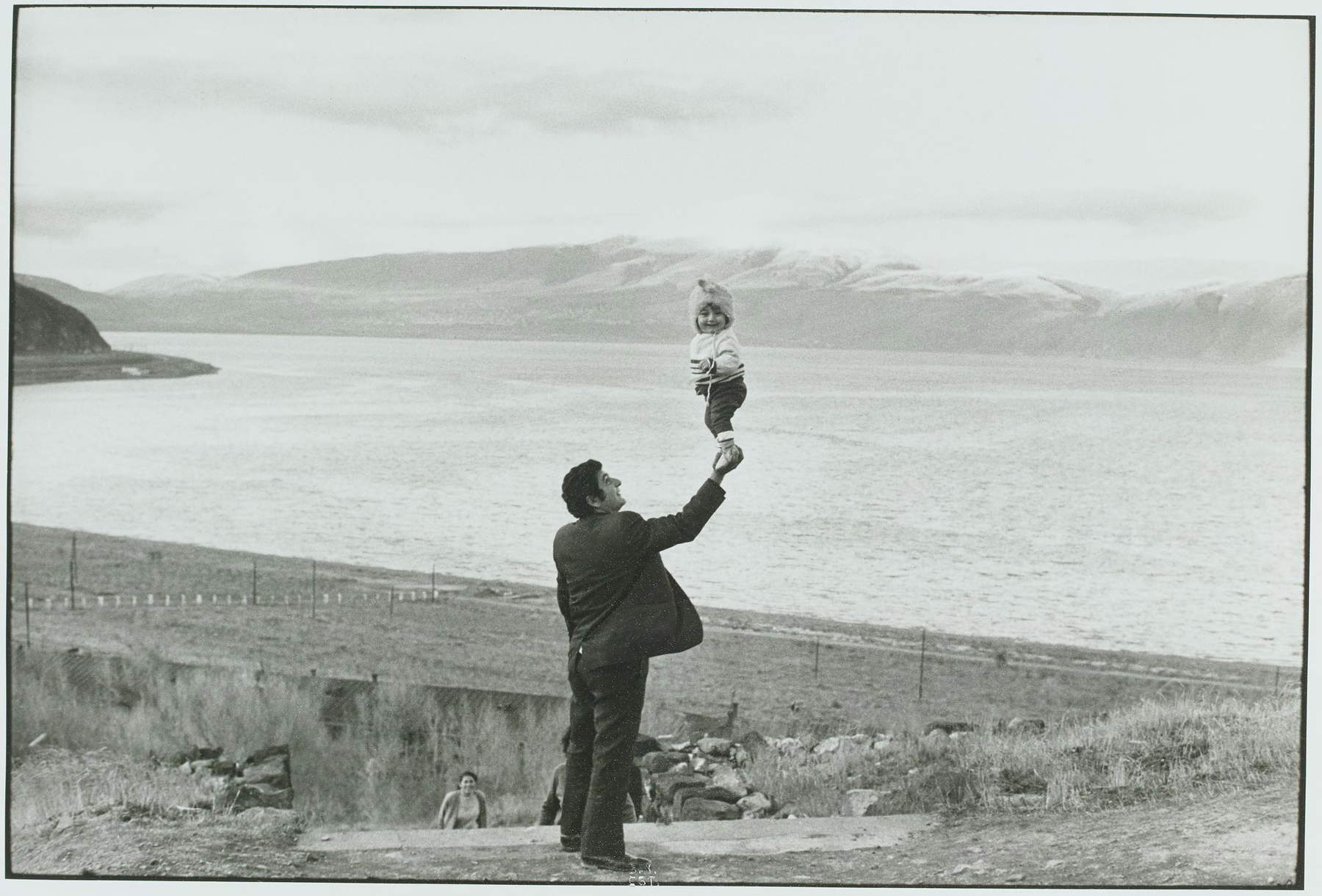 |
| Henri Cartier-Bresson, Lake Sevan, Armenia, USSR, 1972, silver salt gelatin test 1973 © Fondation Henri Cartier-Bresson / Magnum Photos |
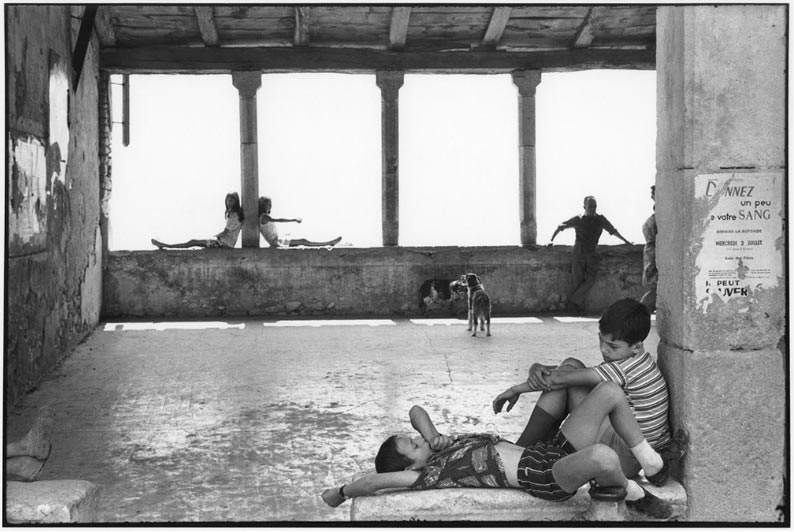 |
| Henri Cartier-Bresson, Simiane-la-Rotonde, France, 1969, silver salt gelatin test 1973 © Fondation Henri Cartier-Bresson / Magnum Photos |
The 1973 Master Collection will complete, “closing” the circle, the presentation of his best works, an indispensable tool for understanding his work, an important operation as much for himself as for generations of photographers and for the subsequent accessibility of that heritage. There is no other collection of photographic reproductions, chosen by Cartier-Bresson, of such importance for museum purposes.
It was about a year and a half for this choice, at the beginning of a period that, from 1972 until his death in 2004, would see him reduce his activity as an acclaimed photographer to return to drawing, his primal field of passionate study. At the age of eighteen he approached painting by attending the studio of André Lhote, and following the Surrealists closely. Surrealism would in fact visibly leave a trace in his works.
Central to this tranche de vie were John and Dominique de Menil, patrons in Houston, Texas with an important art collection (also promoters of notable interventions such as the Rothko Chapel), who, supporters of Magnum and longtime friends of Cartier-Bresson, asked him to choose a series of images for their collection. This request and proposal reached him at a key period in his life, when he was in his 60s and about to leave Magnum, deciding to focus as an artist precisely on drawing and, in parallel, to enhance his own photographic work of the past.
Being part of the Menil Collection will be an opportunity to retrace and recompose his photographs, a grand jeu, grand, personal game: he will choose from the set exactly three hundred and eighty-five, including all the paths that have marked his path: the influence of the Surrealists, photojournalism, street scenes and portraits.
A multitude of numbered photographs, ordered not chronologically but by country; over the years as a photographer he had traveled extensively, including to the East, allowed, for example, into the Soviet Union since the beginning of the Cold War. The Collection thus presents shots of a variety of epochal circumstances and “decisive moments,” in France for the most part, Belgium, Spain, England, Ireland, Germany, Italy, precisely in the former USSR countries, the United States, Mexico and Canada, and again Turkey, Greece, Morocco, countries of the former Yugoslavia, China, India, Japan and Indonesia... ending with portraits, made here and there, of eminent coeval writers and artists, characters of the twentieth century, of his cultural era.
A peculiar selection of the “perfect prints of the best pictures” in his own words in a 1972 letter to John de Menil, preserved at the Menil Archives in Houston. Prints made by Georges Fèvre, as usual in the Pictorial workshop in Paris, with a print run of six, unique and complete sets on silver salt paper in the 30 x 40 cm format. First exhibited in 1974 at the Rice Museum in Houston, they now belong not only to the Menil Collection but also to the Bibliothèque nationale de France and the Fondation Henri Cartier-Bresson in Paris, the Victoria and Albert Museum in London and the University of Arts in Osaka, which produced an official publication in 1979. In addition, a few years ago, the last available copy of the Master Collection became part of François Pinault’s important collection (with more than three thousand works spanning the 20th to 21st centuries), the subject of the original exhibition Henri Cartier-Bresson. Le Grand Jeu (from July 11, 2020 to February 26, 2021), exhibited in part at its Palazzo Grassi venue in Venice and published in its entirety in the eponymous, extensive and valuable catalog published by Marsilio.
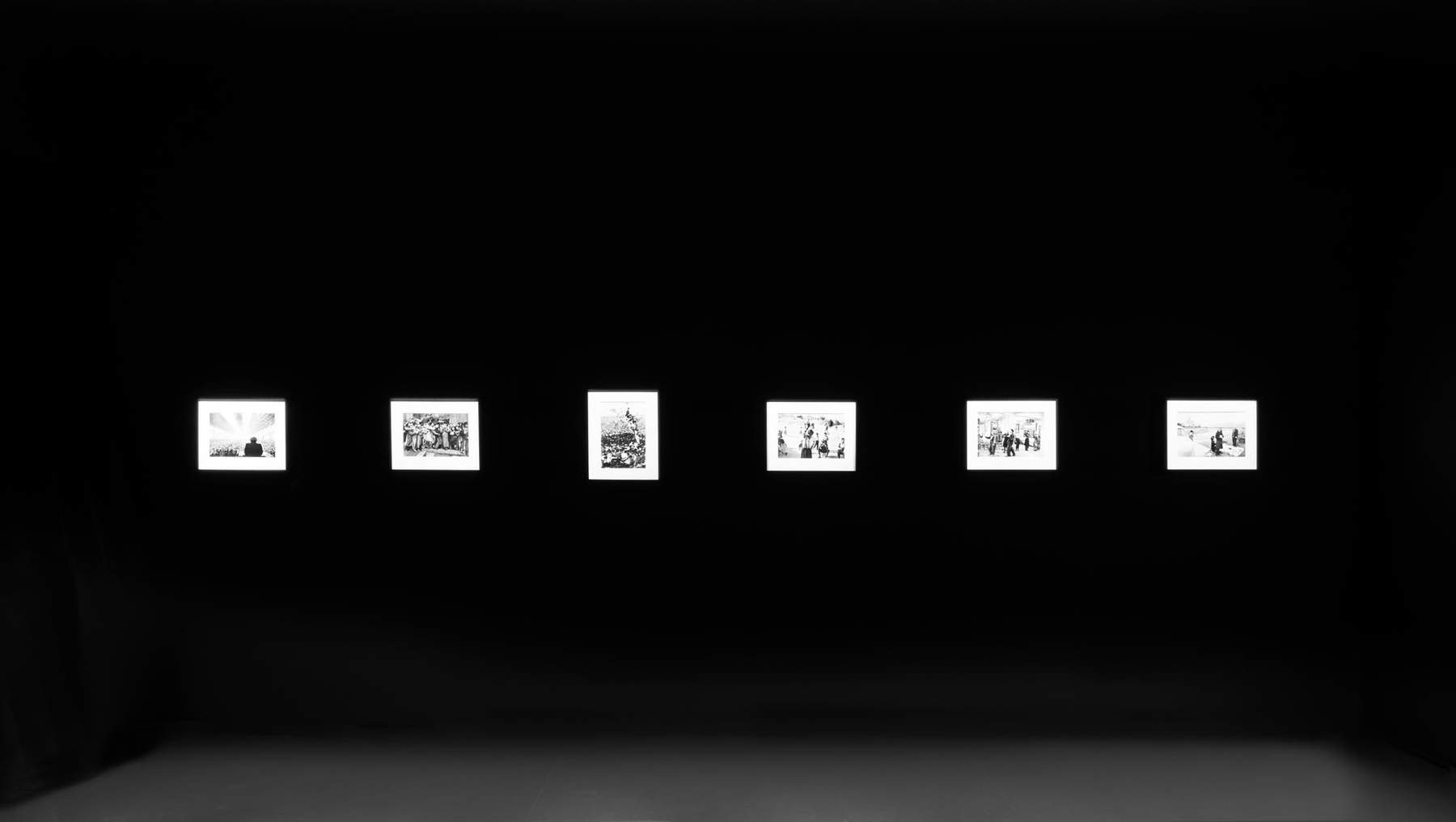 |
| Works by Henri Cartier-Bresson. © Fondation Henri Cartier-Bresson / Magnum Photos. View of the exhibition Henri Cartier-Bresson. Le Grand Jeu, Venice, Palazzo Grassi, 2020. © Palazzo Grassi, ph. Marco Cappelleti |
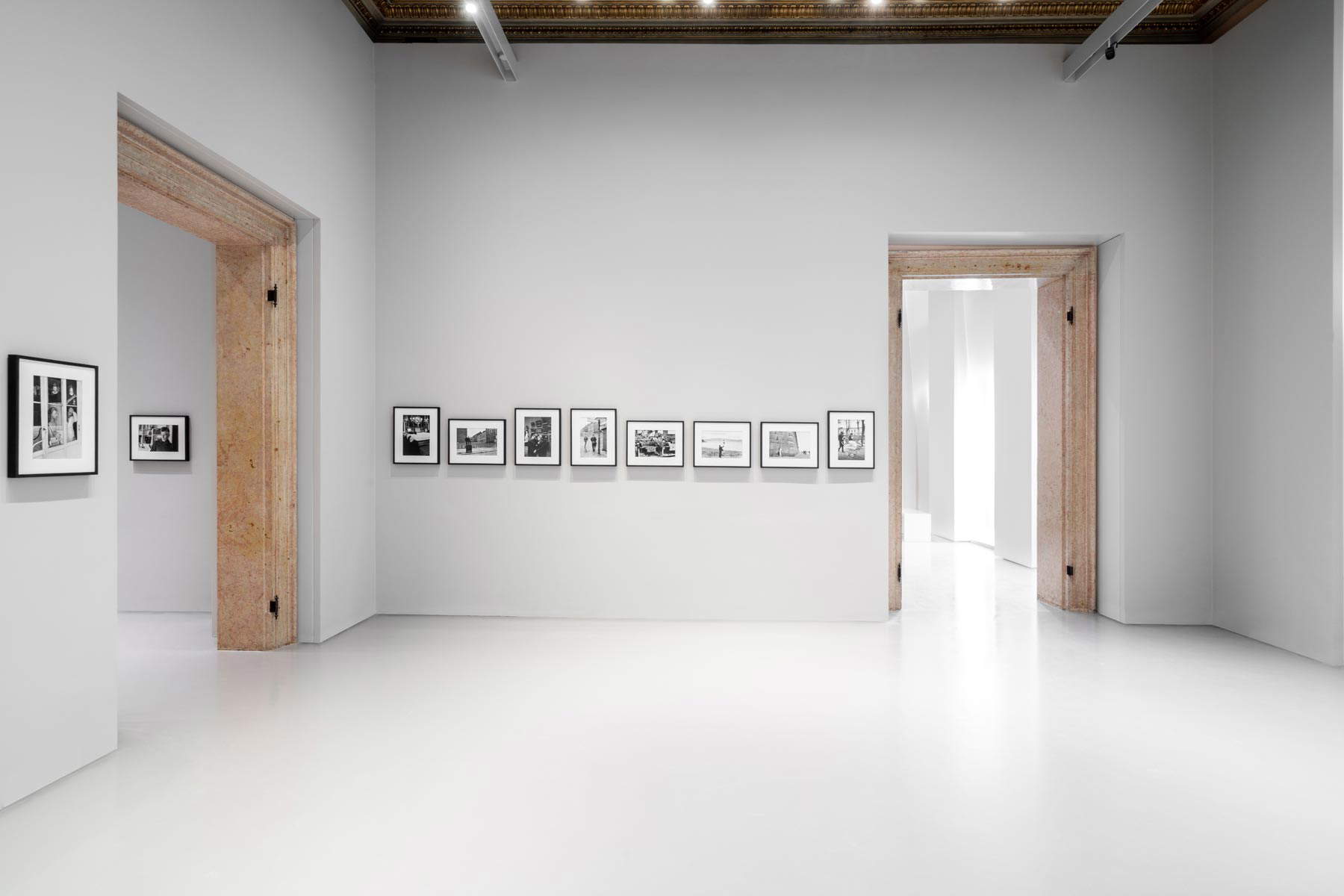 |
| Works by Henri Cartier-Bresson. © Fondation Henri Cartier-Bresson / Magnum Photos. View of the exhibition Henri Cartier-Bresson. Le Grand Jeu, Venice, Palazzo Grassi, 2020. © Palazzo Grassi, ph. Marco Cappelleti |
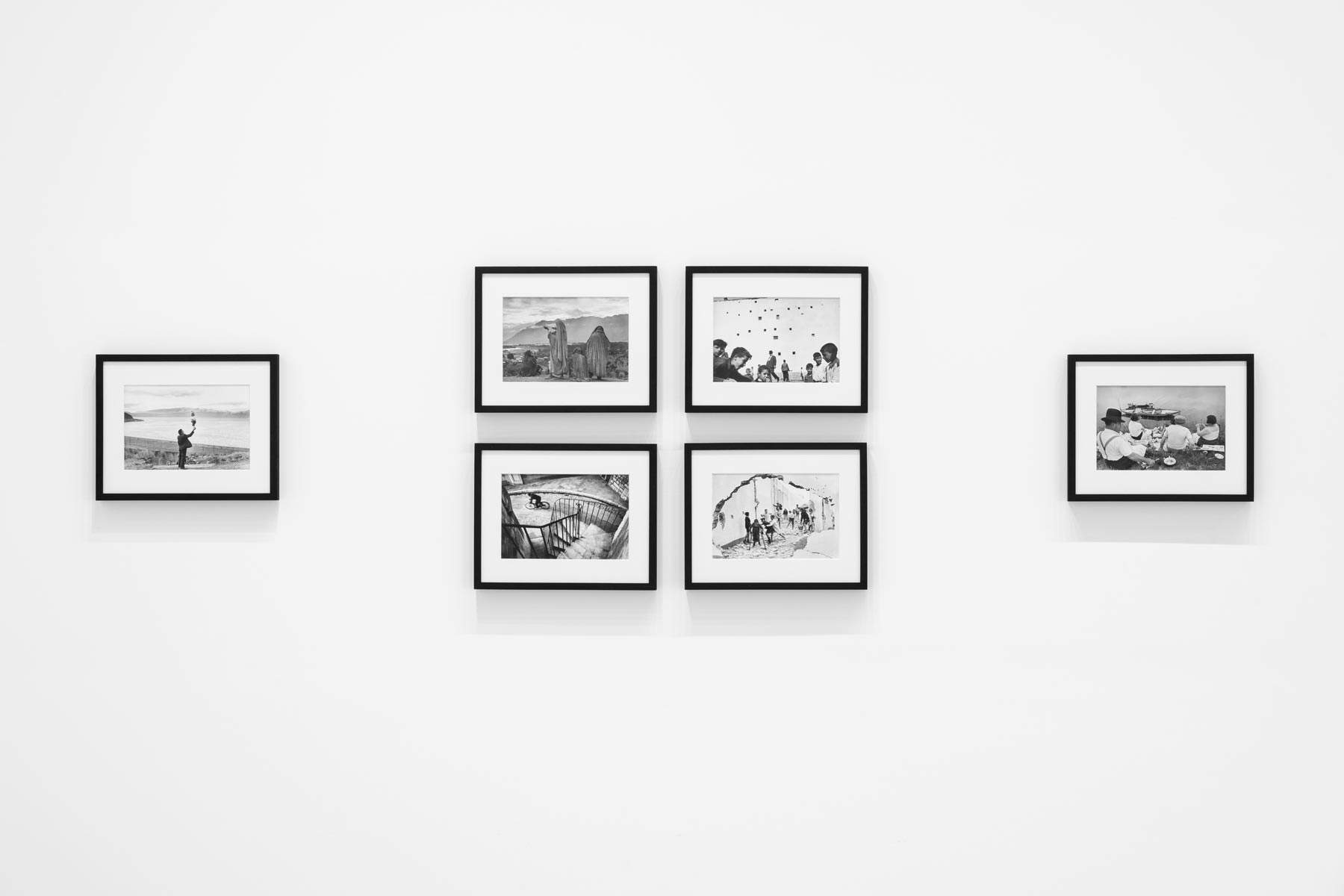 |
| Works by Henri Cartier-Bresson. © Fondation Henri Cartier-Bresson / Magnum Photos. View of the exhibition Henri Cartier-Bresson. Le Grand Jeu, Venice, Palazzo Grassi, 2020. © Palazzo Grassi, ph. Marco Cappelleti |
Co-organized with the Bibliothèque nationale de France, which will host its second European stage, and in collaboration with the Fondation Henri Cartier-Bresson founded by the artist himself together with his family in 2000, the exhibition has seen a shortlist of ’chosen curators’ gathered around his figure: primarily French collector François Pinault, U.S. photographer Annie Leibovitz, Spanish writer Javier Cercas, German filmmaker Wim Wenders, and French art historian Sylvie Aubenas, also Director of the Prints and Photography Department of the Bibliothèque nationale de France, a partner in the initiative. The project, conceived and coordinated by Matthieu Humery, made it possible to penetrate and reread Bressonian images by providing for the unusual and highly interesting coexistence of five lines of interpretation of the same collection through the analysis of the five exceptional curators, who were called upon to generate as many paths, internal to the exhibition and deliberately autonomous from each other. Invited to extrapolate about fifty photographs each from among the three hundred and eighty-five, each one chose which he or she considered to be unfailing, also determining their different arrangement, while still within the same macro-path. So much so that certain more or less iconic images from the Grand Jeu are repeated in one and more sections, whether or not including the kit and references provided in Bresson’s original progression.
Plural practice, this, which affirms the crucial value of contextualizing the artwork. “Every exhibition,” Humery reports, “is about creating visual devices that fit into a specific environment to reveal the works. Thus the curator’s choice influences, deliberately or accidentally, the viewer’s view of them. In fact, through their narrative, the five curators create a link between the works and open new perspectives. And, in addition, they freely reveal to us their history, their feelings and the place those images have taken in their work and in their lives.”
Well, as emerges from Aubenas’ more specifically didactic contribution, we can trace in the Master Collection the points of Henri Cartier-Bresson’s legendary photographic making: the human, the accidental, the fortuitous marvelous thus marrying surrealism and photojournalism, the “objective case,” the “fixed explosive,” the preference for black and white, framing with only natural light without ever using flash, the rectangular format, the quality of the print... “his photographs, particularly those in the Master Collection, are a hymn to life,” Pinault writes, “the sensitive and accessible universality of his art has always struck me, Cartier-Bresson is a storyteller who imposes nothing, but suggests everything.”
Warning: the translation into English of the original Italian article was created using automatic tools. We undertake to review all articles, but we do not guarantee the total absence of inaccuracies in the translation due to the program. You can find the original by clicking on the ITA button. If you find any mistake,please contact us.